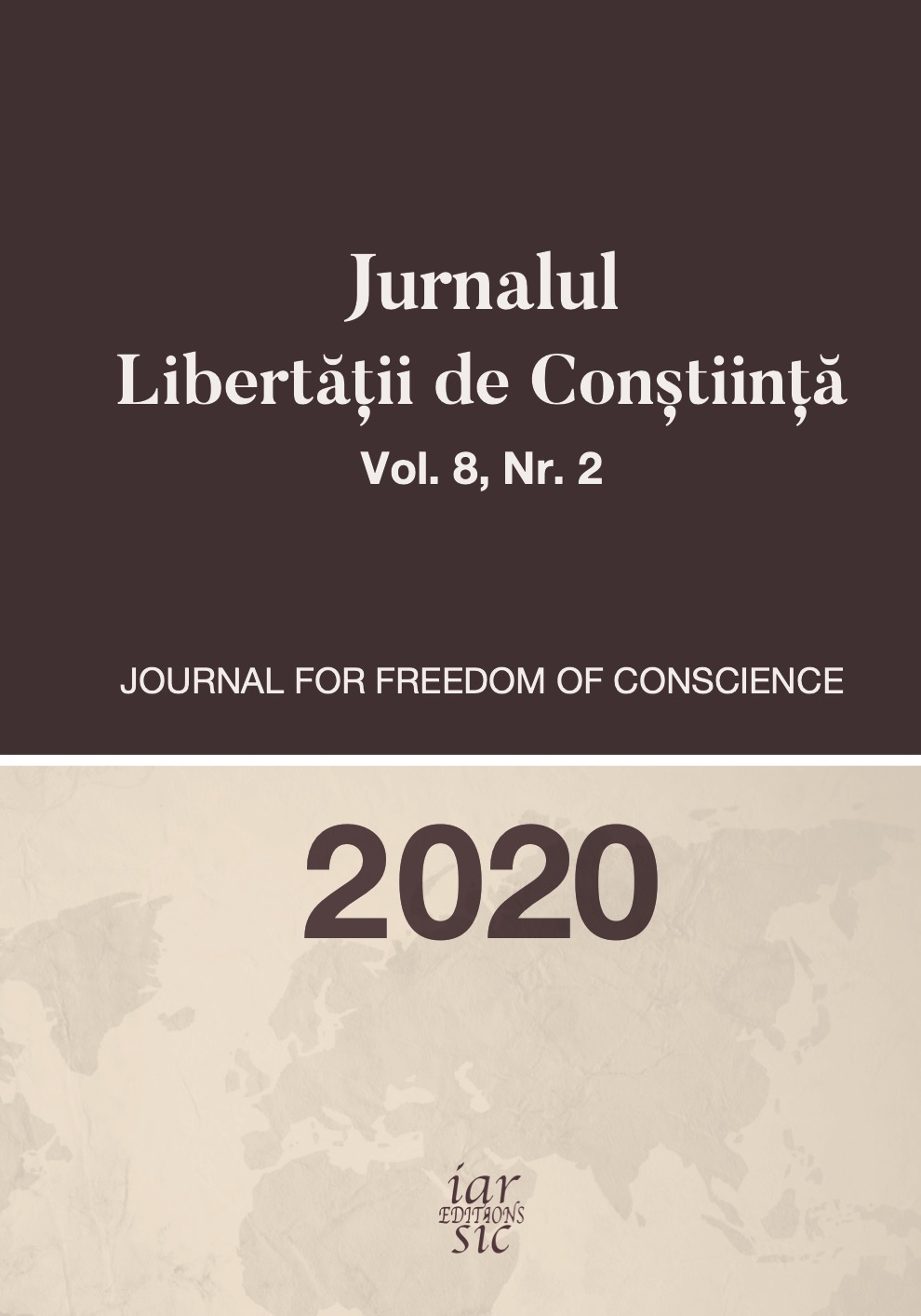PERCEPȚIA „BISERICII CA SUBIECT AL SUFERINȚEI” ÎN ISTORIA TRANSILVANIEI DIN PRIMA PARTE A SECOLULUI AL XVIII-LEA: PÉTER BOD (1712-1769) ȘI MARTIROLOGIA PROTESTANTĂ
The Perception of a Suffering Church in Transylvania in the First Half of the Eighteenth Century: Péter Bod (1712-1769) and Protestant Martyrology
Author(s): Botond Kund GudorSubject(s): Christian Theology and Religion, History, Local History / Microhistory, 18th Century
Published by: Editions IARSIC
Keywords: martyrdom; freedom; Bod Péter; the cult of saints; utilitarianism; public good;
Summary/Abstract: In the eighteenth century understanding, freedom of conscience equals Christian’s attempt to live according to their own religious beliefs, while not impeding the beliefs of others. Mutual religious tolerance, as a fund generating freedom of conscience, requires detachment, as well as a re- evaluation and reflection on the religious conflicts of the sixteenth and the seventeenth centuries. The perception of martyrdom is changing under the pressure of modernizing the European society. This evolution is also argued by Péter Bod’s historiography. His Protestant martyrology, his attachment to freedom of conscience was closely linked to the image of a militant Church. His very example is part of the utilitarian process of unrestricted freedom of conscience. In 1738, he translated into Hungarian the Latin manuscript of Bálint Kocsi Csergő, Narratio brevis, in which he presented the martyrdom and struggle for freedom of religion and freedom of conscience of the Protestant priests taken on the Neapolitan galleys. By being copied again and again, the volume became the most read manuscript in the Transylvanian Protestant circle. Later on, in the Istoria Bisericii luptătoare a lui Dumnezeu [The history of God’s militant Church] and Sfântul Heortocrat sau istoriile scurte ale sărbătorilor și a sfinților [St. Heortocrates or short tales on holidays and saints], the image of Protestant martyrdom is identified with those characters who—despite being faced with opposition and persecution—have transformed freedom of religion into their lifelong goal, a common good of all people. This is also how Bod defined the premises of freedom of religion and freedom of conscience, as true martyrdom is useful for society (bonum publicum) and for the country. The secularization of the image of martyrdom led to a new understanding of the term—that of being useful and prolific in the society where one lives, so that it can ensure one’s freedom. By exemplifying Protestant martyrology through various severe historic events, he sees human sacrifice as necessary in achieving the desired freedom. His understanding of martyrdom and freedom clearly shows the path to denominational survival in times of hardship—a journey in which the existence of the religious man equals sacrifice, selflessness and social utility.
Journal: Jurnalul Libertății de Conștiință
- Issue Year: 8/2020
- Issue No: 2
- Page Range: 231-260
- Page Count: 30
- Language: Romanian

